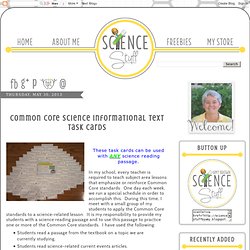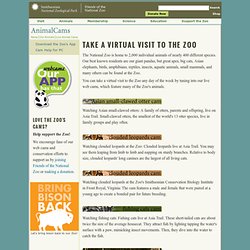

Science Fun Page! - Sciensational.com. How to Make a Hovercraft. If you're on Pinterest, chances are good you've seen this activity.

But for the few who haven't, get ready for some seriously cheap science fun. We made a hovercraft! Supplies An old CD that you no longer need Glue gun and glue sticks thumbtack soda bottle screw top (you want one that's fairly deep) latex party balloon Assembly Poke several holes in the plastic bottle top with the thumbtack. Use a hot glue gun (Adults, please. You're almost done. Now blow up the balloon. Ask your child to make predictions. Let it Go Set on a flat surface like a countertop or wood floor. Invite the child to form a hypothesis about why and how this works. How it WorksThe force of the air that exits the balloon as it deflates goes through the holes in the bottle cap, pushes against the surface (floor or counter), and creates a cushion of air over which the CD glides freely. Common Core Science Informational Text Task Cards. These task cards can be used with ANY science reading passage.

In my school, every teacher is required to teach subject area lessons that emphasize or reinforce Common Core standards. One day each week, we run a special schedule in order to accomplish this. During this time, I meet with a small group of my students to apply the Common Core standards to a science-related lesson. It is my responsibility to provide my students with a science reading passage and to use this passage to practice one or more of the Common Core standards. I have used the following: Students read a passage from the textbook on a topic we are currently studying. As a result, I developed a set of “Common Core Science Task Cards” to use with my students each week. All Sims.
Science A-Z: Internet-delivered, Leveled Elementary Science Units. Science Facts & Trivia - Sciensational.com. Animal Web Cams at the National Zoo. The National Zoo is home to 2,000 individual animals of nearly 400 different species.

Our best known residents are our giant pandas, but great apes, big cats, Asian elephants, birds, amphibians, reptiles, insects, aquatic animals, small mammals, and many others can be found at the Zoo. You can take a virtual visit to the Zoo any day of the week by tuning into our live web cams, which feature many of the Zoo's animals. Watching Asian small-clawed otters: A family of otters, parents and offspring, live on Asia Trail. Small-clawed otters, the smallest of the world's 13 otter species, live in family groups and play often. Watching clouded leopards at the Zoo: Clouded leopards live at Asia Trail. Watching clouded leopards at the Zoo's Smithsonian Conservation Biology Institute in Front Royal, Virginia: The cam features a male and female that were paired at a young age to create a bonded pair for future breeding.
Watching fishing cats: Fishing cats live at Asia Trail. Naked mole-what?